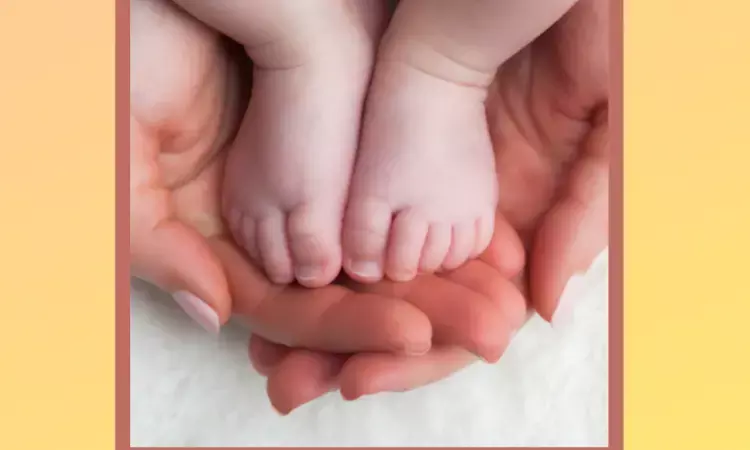- Home
- Medical news & Guidelines
- Anesthesiology
- Cardiology and CTVS
- Critical Care
- Dentistry
- Dermatology
- Diabetes and Endocrinology
- ENT
- Gastroenterology
- Medicine
- Nephrology
- Neurology
- Obstretics-Gynaecology
- Oncology
- Ophthalmology
- Orthopaedics
- Pediatrics-Neonatology
- Psychiatry
- Pulmonology
- Radiology
- Surgery
- Urology
- Laboratory Medicine
- Diet
- Nursing
- Paramedical
- Physiotherapy
- Health news
- Fact Check
- Bone Health Fact Check
- Brain Health Fact Check
- Cancer Related Fact Check
- Child Care Fact Check
- Dental and oral health fact check
- Diabetes and metabolic health fact check
- Diet and Nutrition Fact Check
- Eye and ENT Care Fact Check
- Fitness fact check
- Gut health fact check
- Heart health fact check
- Kidney health fact check
- Medical education fact check
- Men's health fact check
- Respiratory fact check
- Skin and hair care fact check
- Vaccine and Immunization fact check
- Women's health fact check
- AYUSH
- State News
- Andaman and Nicobar Islands
- Andhra Pradesh
- Arunachal Pradesh
- Assam
- Bihar
- Chandigarh
- Chattisgarh
- Dadra and Nagar Haveli
- Daman and Diu
- Delhi
- Goa
- Gujarat
- Haryana
- Himachal Pradesh
- Jammu & Kashmir
- Jharkhand
- Karnataka
- Kerala
- Ladakh
- Lakshadweep
- Madhya Pradesh
- Maharashtra
- Manipur
- Meghalaya
- Mizoram
- Nagaland
- Odisha
- Puducherry
- Punjab
- Rajasthan
- Sikkim
- Tamil Nadu
- Telangana
- Tripura
- Uttar Pradesh
- Uttrakhand
- West Bengal
- Medical Education
- Industry
Proximity to hydraulic fracturing sites linked with adverse birth outcomes: JAMA

World Birth Defects Day
Canada: Individuals exposed to hydraulic fracturing throughout their pregnancy may be at a greater risk of a variety of negative birth outcomes, says an article published in the Journal of American Medical Association - Pediatrics.
The relationship between human development and hydraulic fracturing is unclear. Several studies have found a link between unconventional natural gas production and poor birth outcomes; however, geology and regulation differ by area. As a result, Zoe F. Cairncross and colleagues undertook this study to assess the overall relationship between hydraulic fracturing sites to residential proximity and bad birth outcomes, as well as whether well density altered this correlation.
From 2013 to 2018, this population-based retrospective cohort study of pregnant women in rural Alberta, Canada, was conducted. Participants were women of reproductive age (18-50 years) who had a pregnancy between January 1, 2013, and December 31, 2018, and resided in rural regions. Individuals were omitted if they resided in a city, were beyond the age limit, or had missing information on newborn gender, postal code, or area-level socioeconomic position. The Alberta Energy Regulator (n = 4871) identified oil and gas wells which underwent hydraulic fracturing between 2013 and 2018. Individuals were deemed exposed if their postal delivery point was within 10 kilometers of one or more hydraulically fractured wells during the one-year preconception period or during pregnancy.
The key findings of this study were as follow:
1. After exclusions, the sample consisted of 26 193 people, 34 873 pregnancies with a mean (SD) parental age of 28.2 (5.2) years.
2. After controlling for parental age at delivery, multiple births, fetal sex, area-level socioeconomic status and obstetric comorbidities, individuals who lived within 10 kilometres of at least one hydraulically fractured well had significantly higher rates of small for major congenital anomalies and gestational age.
3. The risk of spontaneous preterm birth and small gestational age was considerably elevated in individuals who lived within 10 kilometers of 100 or more wells.
In conclusion, close residential proximity to a large number of hydraulic fracturing sites was linked to poor birth outcomes in this retrospective cohort analysis. Though we cannot determine the mechanisms (e.g., air, water) through which hydraulic fracturing and oil and gas production may increase the risk of unfavorable health outcomes in our study, we encourage more research to explore these potential routes.
Reference:
Cairncross ZF, Couloigner I, Ryan MC, et al. Association Between Residential Proximity to Hydraulic Fracturing Sites and Adverse Birth Outcomes. JAMA Pediatr. Published online April 04, 2022. doi:10.1001/jamapediatrics.2022.0306
Keywords: JAMA, pregnancy, hydraulic fracturing, obstetric comorbidity, delivery, parental age, birth outcome, pollution, preterm birth, birth weight, Zoe F Cairncross
Medical Dialogues consists of a team of passionate medical/scientific writers, led by doctors and healthcare researchers. Our team efforts to bring you updated and timely news about the important happenings of the medical and healthcare sector. Our editorial team can be reached at editorial@medicaldialogues.in.
Dr Kamal Kant Kohli-MBBS, DTCD- a chest specialist with more than 30 years of practice and a flair for writing clinical articles, Dr Kamal Kant Kohli joined Medical Dialogues as a Chief Editor of Medical News. Besides writing articles, as an editor, he proofreads and verifies all the medical content published on Medical Dialogues including those coming from journals, studies,medical conferences,guidelines etc. Email: drkohli@medicaldialogues.in. Contact no. 011-43720751


